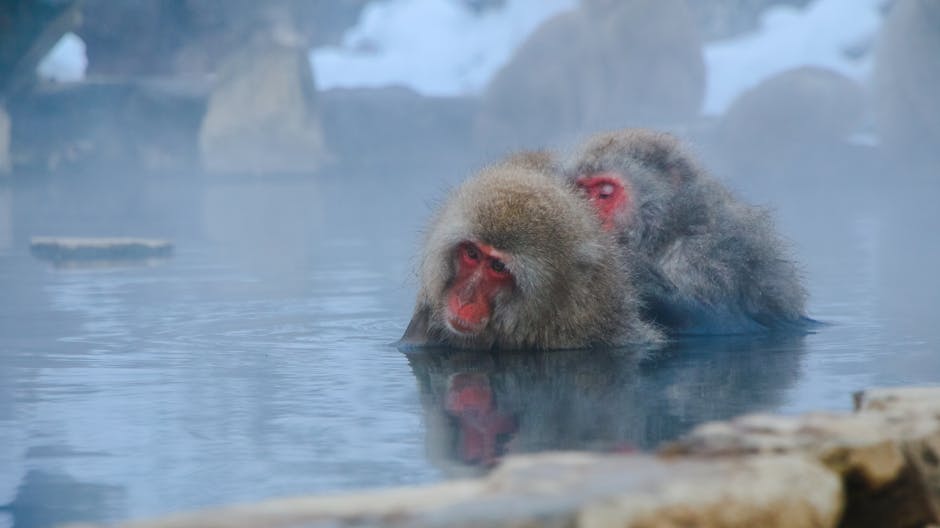Introduction: Why Onsens Matter in Niseko
In Japan, the onsen isn’t just a bath. It’s a tradition soaked in centuries of ritual, where mineral-rich, geothermal waters are used to reset body and mind. Locals and travelers alike treat it as both a cleansing practice and a quiet form of meditation—steam rising, the hush of running water, and no distractions.
Now picture that in the snowy alpine backdrop of Niseko. Here, volcanic springs bubble up beneath ski tracks and cedar forests. The region’s unique location—on the Pacific Ring of Fire and surrounded by mountains—creates a rare marriage of volcano-fed baths and winter sports paradise.
For skiers, snowboarders, hikers, and anyone chasing clean air or clearer thoughts, Niseko’s onsens offer the ideal cool-down. After a long carve through fresh powder or a climb up a trail, there’s nothing quite like ending the day submerged in silent heat, watching steam swirl under a snow-dusted sky. It’s more than refreshing—it’s elemental.
What Exactly Is a Traditional Onsen?
Japan’s onsen tradition is rooted in both natural beauty and intentional wellness. In Niseko, that tradition comes alive through steaming geothermal waters surrounded by alpine vistas. But an onsen isn’t just a hot bath—it’s a centuries-old practice of healing, reflection, and quiet.
Mineral-Rich Waters from Deep Below
Niseko’s onsens are fed by natural geothermal springs deep underground. These waters are heated by volcanic activity and infused with beneficial minerals like sulfur, sodium chloride, magnesium, and calcium.
Sulfur: often used to support skin health and treat conditions like eczema
Magnesium: helps relax muscles and improve circulation
Sodium chloride: known for its warming effect and detoxifying properties
Each onsen has a slightly different mineral makeup, which can change the color, scent, and even the therapeutic effects of the water.
Your Body Will Thank You
Soaking in an onsen does far more than simply warm you up after a day on the slopes.
Common health benefits include:
Natural muscle recovery—particularly ideal for skiers and hikers
Skin softening and rejuvenation from mineral absorption
Stress relief and mental clarity through passive heat therapy
Improved blood circulation and reduced inflammation
Just 15 to 20 minutes in the water can leave you feeling deeply restored.
Ritual, Stillness, Silence
The beauty of a traditional onsen experience lies in more than the water—it’s in the ritual.
Slow movements, quiet entering and exiting
No phones, no digital noise
A focus on solitude, healing, and reconnection with self
This isn’t a place to fill with conversation. It’s a rare space of enforced pause, wrapped in the simplicity of heat, silence, and nature.
When visiting a traditional onsen in Niseko, think less about entertainment and more about immersion—in calm, culture, and care.
Before You Arrive: Onsen Etiquette 101
Stepping into an onsen isn’t like going to a pool. There are rules, and they matter. First, washing before entering the bath isn’t optional—it’s the baseline. Every facility has a wash area, usually with stools, buckets, soap, and handheld showers. Sit down. Scrub thoroughly. Rinse completely. If you skip this, you’re not just being rude—you’re disrespecting centuries of tradition.
Swimsuits? Nope. Towels in the water? Also no. Onsens are nude, period. Bring a small towel for modesty on your way to the bath, but don’t dip it in the water. Leave larger towels and gear in the changing area.
Tattoos can be tricky. Some onsens still ban them due to their association with organized crime in Japan. Others are more relaxed, especially in tourist areas like Niseko. Check ahead. If you have visible tattoos and you’re unsure, choose a tattoo-friendly facility or bring a cover-up patch just in case.
Finally, remember it’s communal. Keep your voice down. Don’t swim, splash, or scroll. Onsens are about quiet, shared space—a pause from the noise. The silence is part of the reset.
What To Expect Inside

Stepping into a Niseko onsen starts with the changing room—simple, clean, and quiet. Shoes off, clothes stored, phone tucked away. The transition begins here, and it’s not just physical. Most facilities split men and women, and the layout usually flows from changing areas into shower stations. Wash thoroughly before entering the main baths. That’s non-negotiable.
Then comes the heart of it: the bath itself. Most onsens offer a mix of indoor and outdoor soaking areas. Indoors, expect steamed-up cedar-scented rooms with mineral-rich water hovering around 40°C. Outside, things get more dramatic. Snow piles high on the edges of stone baths. You sit, half-submerged, feeling the heat from the earth and the sting of winter on your face. It’s a raw kind of contrast, and it never gets old.
Many spots include cold plunges to jolt the system. Rotating between hot soak and icy dip isn’t for everyone, but it’s a ritual for those chasing a deep reset. Just know: onsens aren’t about chatting, selfies, or scrolling. It’s a place to be still. Let the silence stretch. Let the body slow down.
What sets Niseko’s onsens apart are the details. Baths cut from fragrant cedar. Uninterrupted views of Mt. Yotei, looking like a brushstroke from an old ink painting. Even the water varies—laden with magnesium, sulfur, iron—depending on the spring source. These aren’t manufactured spa vibes. This is nature at full volume, quiet as it may seem.
Finding the Right Onsen in Niseko
Niseko’s onsen scene covers a wide spectrum. On one end, you’ve got hidden gems used mostly by locals—simple, no-frills spots where the water does the talking. On the other, there are luxury retreats offering spa menus, mountain views, and curated design to make your soak feel like an experience.
If you’re here for authenticity, you’ll want to seek out smaller ryokan-style baths with natural spring-fed pools and wooden interiors. They may not speak much English, but they speak fluent relaxation. If comfort is your priority, head to one of the upscale resorts. Different vibe—more polished, more amenities—but still tapped into genuine geothermal sources.
The sweet spot? Places that blend the two. Think modern comfort with traditional touches: open-air tubs facing Mount Yotei, locally sourced meals afterward, and quiet policies that keep the atmosphere serene.
To help you choose, check out this guide on Discover the Top Onsens in Niseko.
Beyond Relaxation: Part of a More Sustainable Journey
Onsens in Niseko do more than ease sore muscles. Many of them are rooted in the region’s steady shift toward sustainable, community-conscious tourism. These aren’t just pretty bathhouses—they’re powered by the earth itself. Natural geothermal energy heats the water, reducing reliance on imported fuels. Local timber and stone are often used in construction. Some facilities even filter and return water back into the system to minimize waste.
What’s more, these bathing spaces often collaborate with nearby farms, artists, and food producers. You’ll find locally sourced soaps, meals made with Hokkaido ingredients, and design touches that highlight native crafts. They’re not here to cater to quick Instagram hits—they’re here to protect a culture.
The community wins too. Onsens often link with regional wellness programs, bringing residents and travelers together. In this corner of Japan, bathing becomes a quiet act of environmental and cultural respect.
Want more on how Niseko is doing tourism right? Check out Eco-Tourism in Niseko.
Final Tips for First-Time Visitors
Pack light. A small towel is all you need—you’ll use it to dry off before heading back to the changing room. Bring a water bottle too. Onsens are hot, and staying hydrated means you’ll actually feel restored after a soak. Most regulars leave their phones behind, and you should too. It’s not just about etiquette; it’s about truly unplugging.
If you’re not staying overnight at a ryokan or hotel with its own onsen, plenty of public spots offer day passes. These are ideal after a frostbitten morning on the slopes or a quiet snow hike through the woods. Just check hours before you go—some onsens have midday breaks for cleaning.
Want serenity with your soak? Try going early in the day or mid-afternoon. Post-ski hours tend to get crowded fast, especially during peak season. You’ll have more space, more silence, and likely a better view of Mt. Yotei without the chatter.
Conclusion
Onsens in Niseko aren’t just about muscle recovery or ticking something off a travel list. They’re experiences built on centuries of tradition—where healing doesn’t come from flashy amenities, but from stillness, ritual, and letting nature do its work. The mineral-rich waters, the mountain air, the quiet—it all adds up to something deeper than a soak.
But it’s not a theme park. You come in, you wash, you enter with awareness. You leave the noise behind—internally and externally. That calm, that respect for space and practice, is part of what makes it work.
So if you’re visiting Niseko, don’t rush the onsen. Let it reset your pace. Treat it less like a bucket list item and more like a personal reset. That’s the real warmth you’re after.

 Poppy Matthaei
Is an accomplished author at Winder Sportisa, distinguished by her compelling and well-researched content. With a fervent love for sports and a knack for capturing the essence of each story, Poppy engages readers with her unique perspective and narrative flair. Her dedication to precision and authenticity aligns perfectly with Winder Sportisa's core values of community, integrity, and innovation. Poppy's contributions not only inform but also inspire, reflecting the company's commitment to fostering an inclusive and supportive environment. Her passion and expertise continue to enhance the quality and impact of Winder Sportisa's publications.
Poppy Matthaei
Is an accomplished author at Winder Sportisa, distinguished by her compelling and well-researched content. With a fervent love for sports and a knack for capturing the essence of each story, Poppy engages readers with her unique perspective and narrative flair. Her dedication to precision and authenticity aligns perfectly with Winder Sportisa's core values of community, integrity, and innovation. Poppy's contributions not only inform but also inspire, reflecting the company's commitment to fostering an inclusive and supportive environment. Her passion and expertise continue to enhance the quality and impact of Winder Sportisa's publications.
